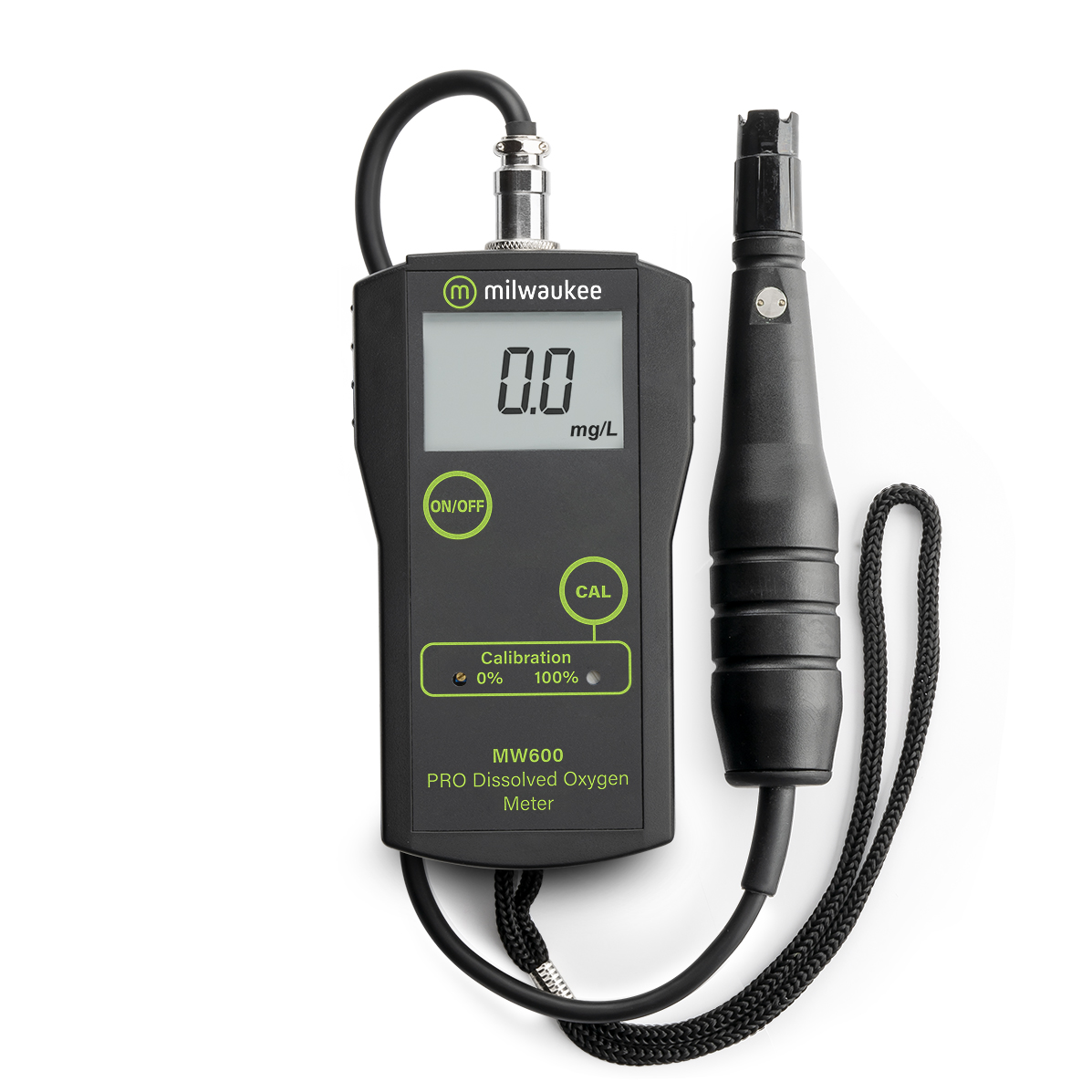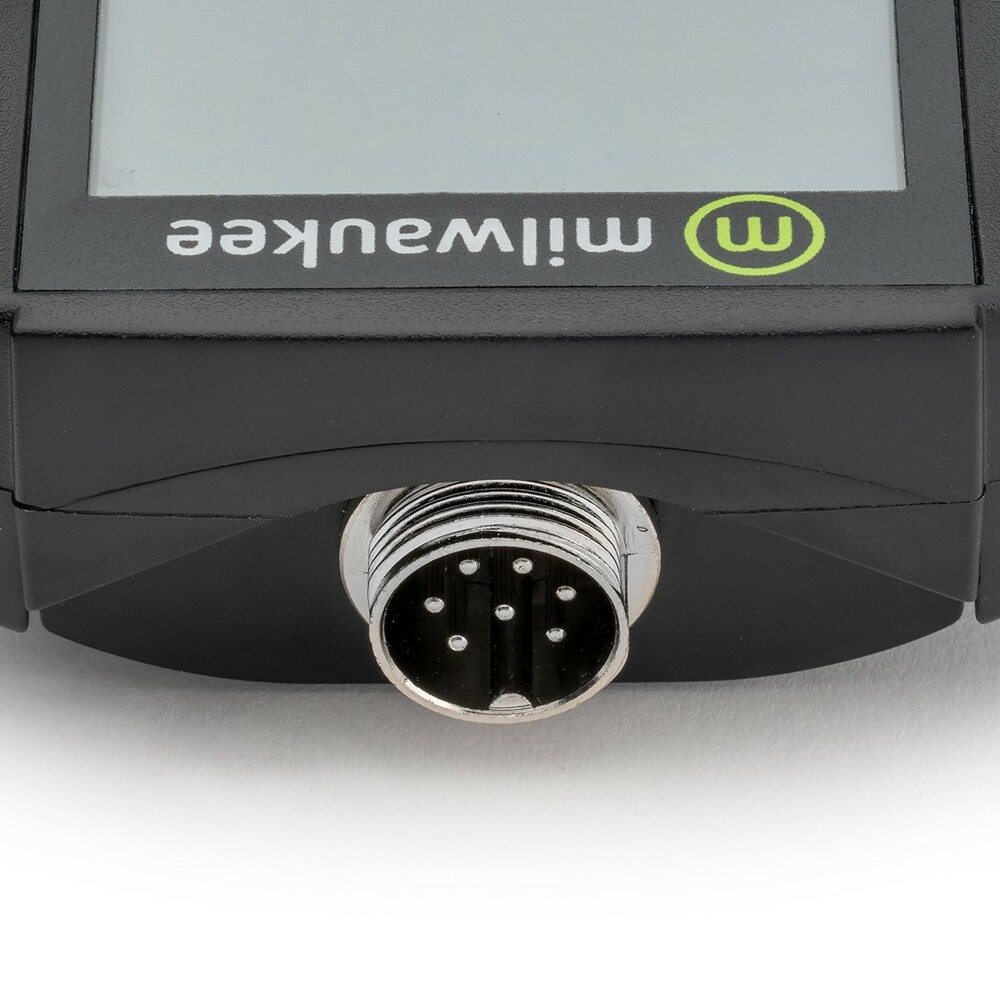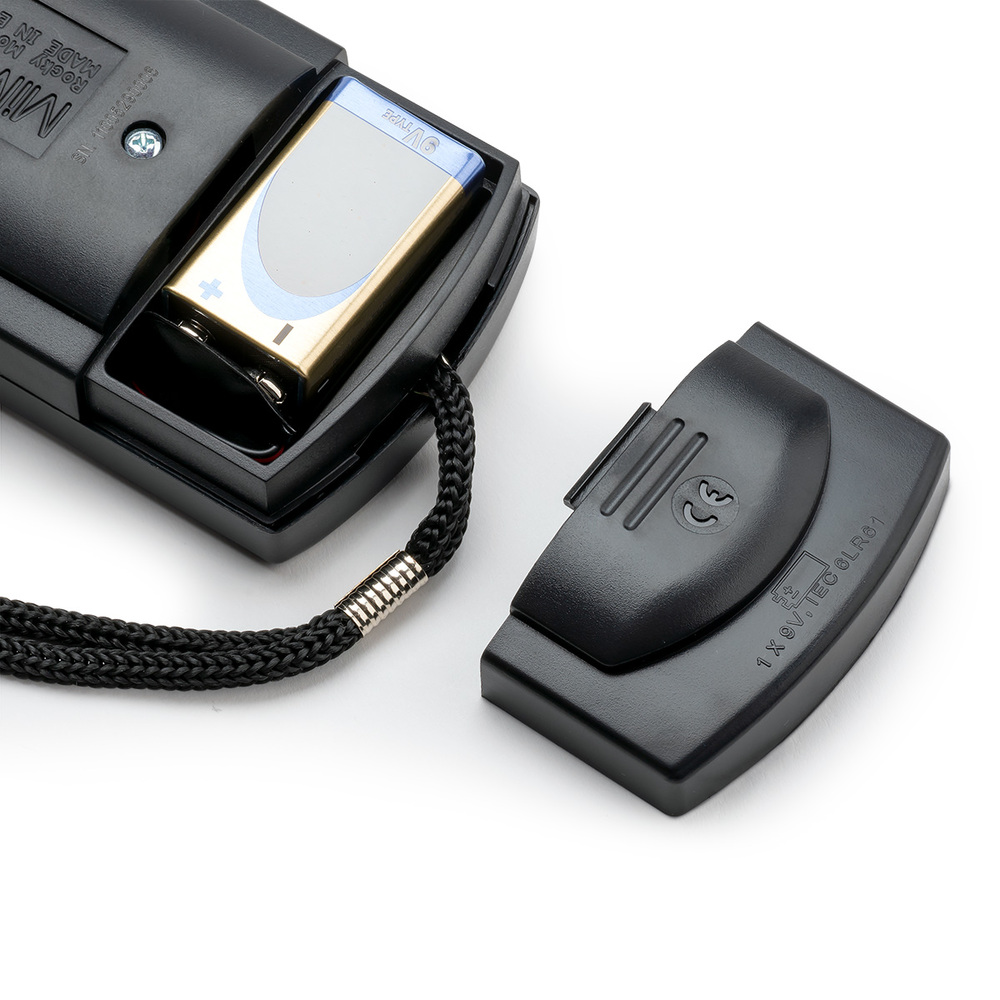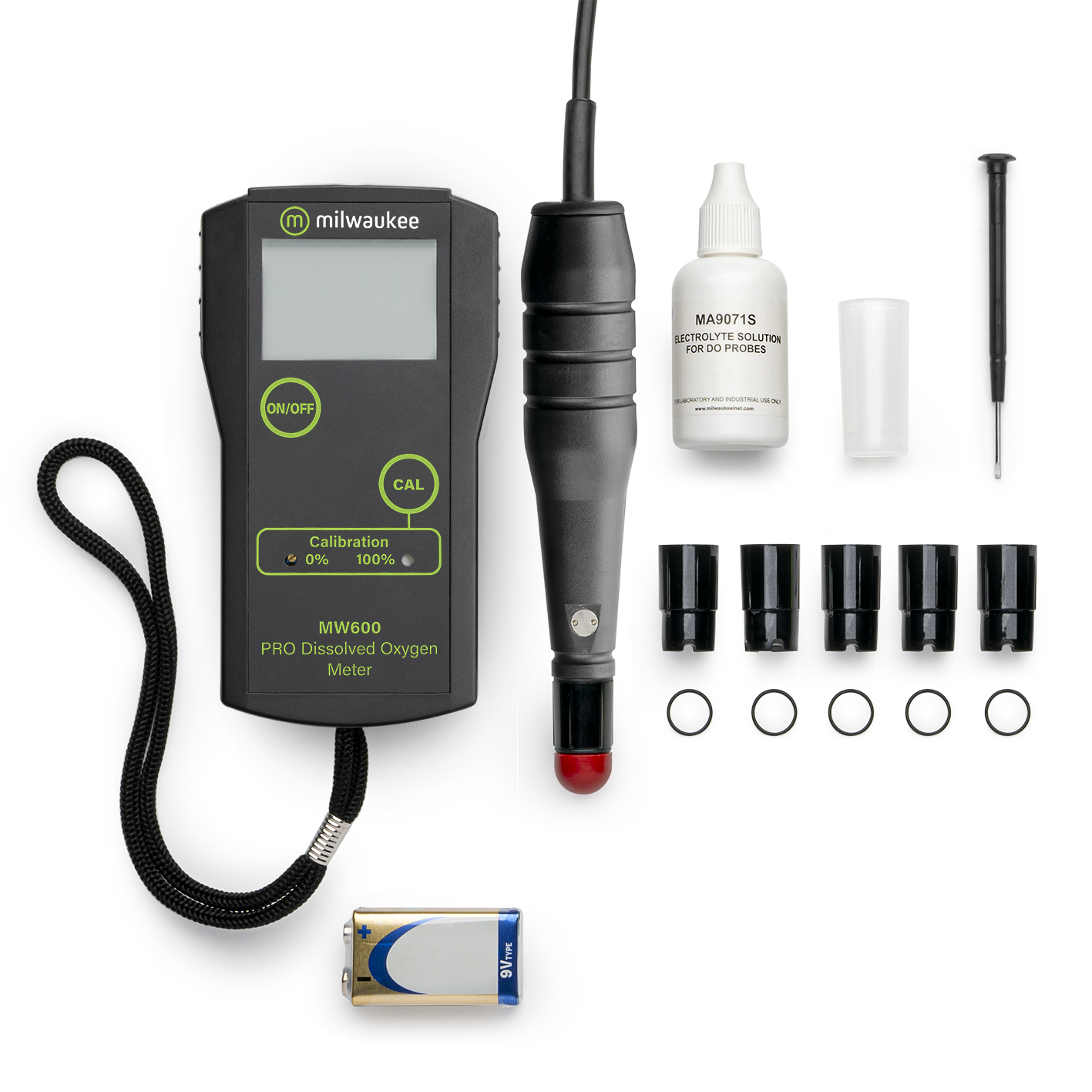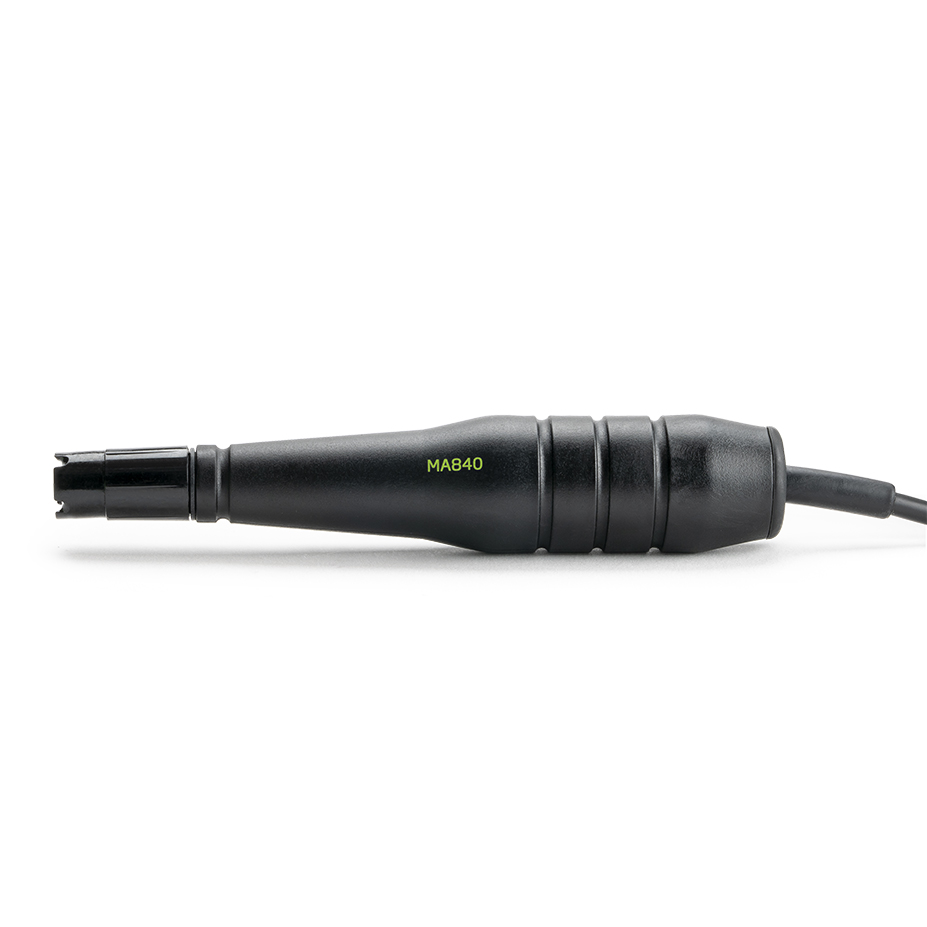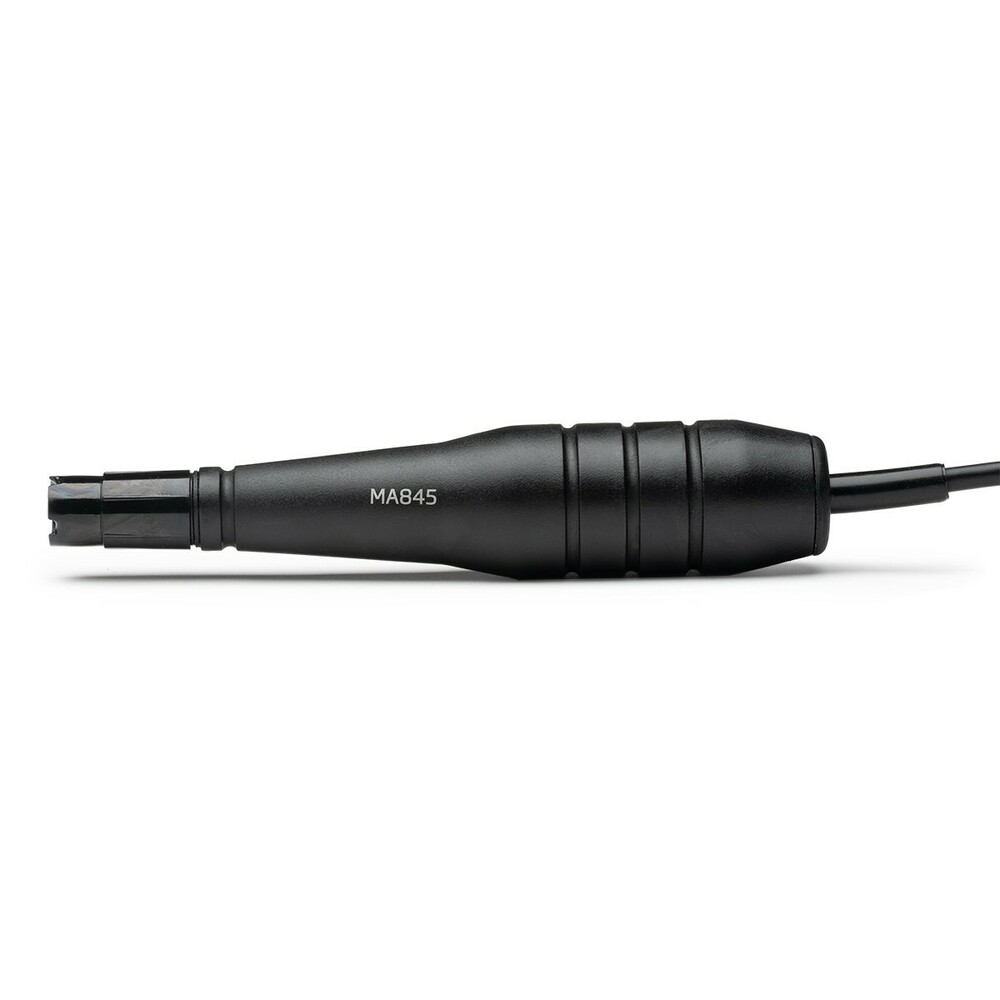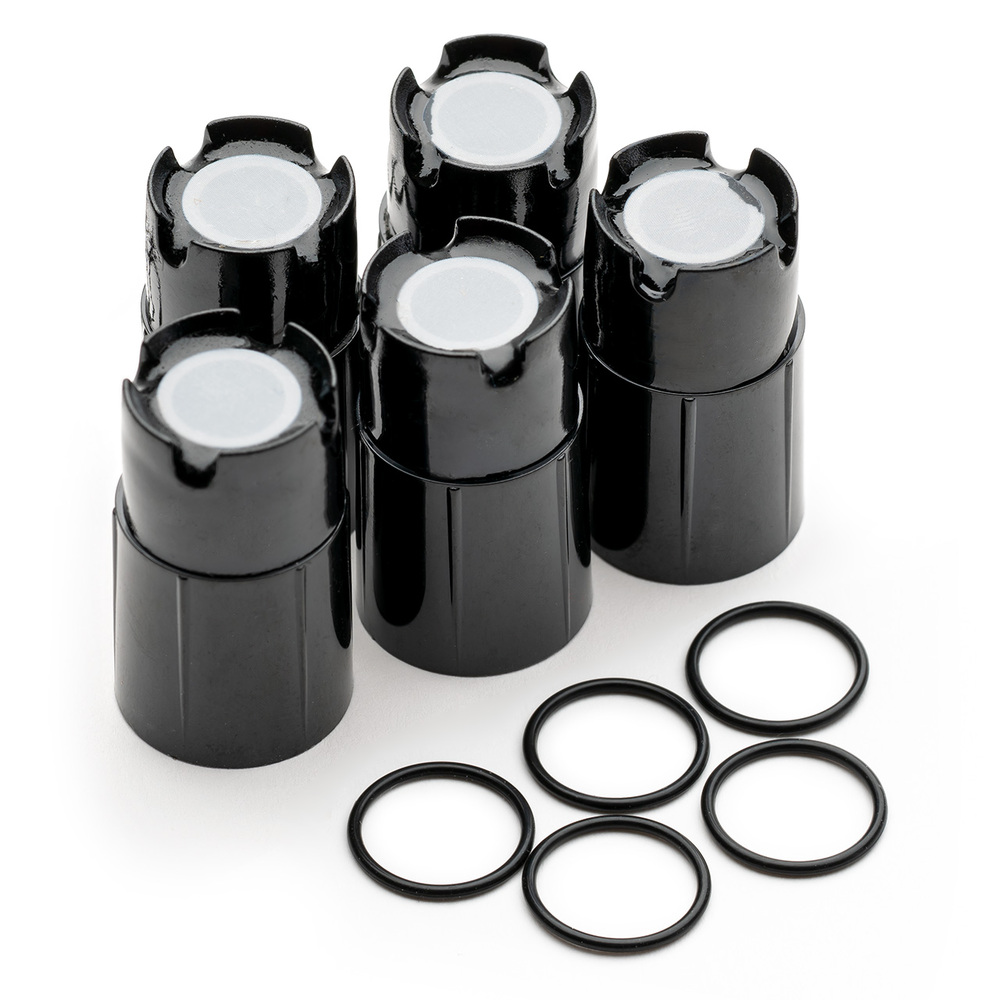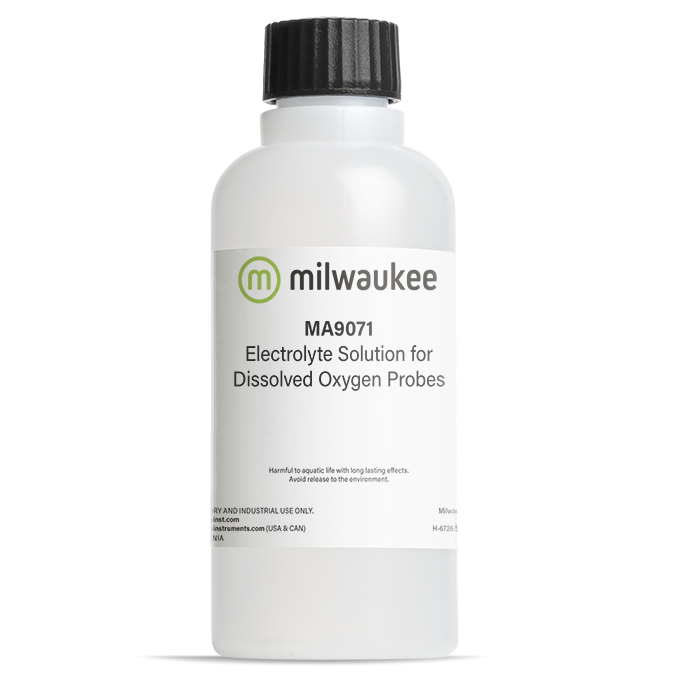Your shopping cart is currently empty.
Milwaukee MW600 PRO Dissolved Oxygen Meter – Accurate, Reliable & Field-Ready DO Monitoring
The Milwaukee MW600 PRO Dissolved Oxygen (DO) Meter is a trusted solution for professionals and enthusiasts who require precise oxygen measurements in water. Whether you're managing aquaculture tanks, monitoring wastewater, researching environmental changes, or ensuring optimal fermentation, the MW600 is built to deliver consistent and reliable results in diverse and demanding environments.
Designed for accuracy and ease-of-use, the MW600 provides fast DO readings with a simple calibration process and long-lasting polarographic probe. Its compact, portable design makes it ideal for fieldwork, while the clear LCD display ensures visibility even in bright outdoor conditions. From fish farms to field stations, the MW600 is the go-to tool for oxygen measurement that supports thriving aquatic ecosystems, productive water treatment, and safe water quality standards.
With its affordable price and professional-grade features, the MW600 is perfect for anyone serious about dissolved oxygen monitoring.
Why Choose the Milwaukee MW600?
- High Accuracy – Provides reliable dissolved oxygen readings with 0.1 mg/L resolution.
- Easy Calibration – One-point manual calibration simplifies setup.
- Field-Ready Design – Lightweight, portable, and battery-operated for on-the-go use.
- Polarographic Probe – Durable and precise, with easy membrane replacement.
- Clear LCD Display – Fast, easy-to-read measurements even in direct sunlight.
- Long Cable Length – 3-meter probe cable offers flexibility in various applications.
Applications of the MW600 PRO Dissolved Oxygen Meter
Aquaculture & Fish Farming Monitor oxygen levels in tanks and ponds to maintain healthy conditions for fish and shrimp, avoid hypoxia, and support efficient feeding.
Environmental Monitoring Conduct water quality assessments in lakes, rivers, and wetlands. Ideal for NGOs, researchers, and conservationists needing portable DO monitoring.
Wastewater & Water Treatment Ensure optimal aerobic conditions for biological treatment processes, monitor oxygenation during aeration, and stay compliant with environmental standards.
Beverage Industry (Brewing & Winemaking) Control oxygen exposure during fermentation and bottling to protect flavor and product stability.
Food Processing Measure DO in process water and seafood tanks to ensure freshness and prevent spoilage.
Education & Research Support classroom experiments and fieldwork in environmental science, biology, and chemistry.
Hydroponics & Agriculture Maintain oxygen-rich nutrient solutions to enhance root development and nutrient absorption in plants.
Swimming Pools & Spas Help maintain optimal water quality and support chlorine efficiency with DO readings in recreational water systems.
Proper Care & Maintenance
To ensure optimal performance and extend the life of your MW600 PRO DO Meter:
- Store Properly: Always keep the probe in a moist environment using the included protective cap and electrolyte solution.
- Replace Membranes: Change the membrane cap regularly and refill with fresh electrolyte solution to maintain accurate results.
- Clean the Probe: Rinse after each use and soak in cleaning solution periodically.
- Calibrate Frequently: Perform regular calibration using air calibration for accurate readings.
- Avoid Air Bubbles: Ensure there are no bubbles trapped beneath the membrane to avoid faulty readings.
“OPEN AIR” CALIBRATION PROCEDURE
1. Remove the membrane: Take the membrane off the end of the probe and dry the diode off.
2. Zero out the display: Connect the probe to the base unit and turn the unit on. Your display should read 0.0. If it does not, go to the position “0” screw on the front of the unit with the screw driver provided and through the access hole make the unit display read 0.0.
3. Fill the membrane: Go to the membrane and put the “O” ring inside the membrane on the shoulder at the base of the threads. Fill the membrane to just short of the “O” ring with MA9071 electrolyte solution. Be sure that there are no bubbles inside the membrane. (Air bubbles are the main cause of calibration failure)
4. Attach the membrane: Screw the membrane on to the probe.
5. Let stablize: Turn the meter on and hang the probe off the end of a table pointing down and let the unit display stabilize (this may take 5 to 15 minutes)
6. Adjust: Push down and hold the “Cal” button on the front face of the meter and with the screwdriver go to the front Cal position “100%” and make the display read 100.
You are now calibrated.
EXTRA TIPS
- Watch for the membrane having wrinkles or stretch marks. If you see wrinkles, replace with a new membrane.
- Always use fresh electrolyte solution (MA9071).
With the right care, your MW600 will remain a reliable partner for all your dissolved oxygen measurement needs.
Order the Milwaukee MW600 Today! Experience precision, durability, and ease with a DO meter trusted by professionals worldwide.
Specifications
Application
Aquaculture & Fish Farming
In aquaculture and fish farming, oxygen is life. Whether you're raising ornamental koi, tilapia, trout, or shrimp, maintaining the right dissolved oxygen (DO) levels is crucial to ensure healthy, thriving stock. Fish and crustaceans depend on oxygen-rich water to grow, feed efficiently, and resist disease. Even a short drop in DO—called hypoxia—can cause stress, stunted growth, or mass die-offs.
The Milwaukee MW600 PRO DO Meter helps farmers stay ahead of these challenges. With its accurate readings and easy field usability, you can spot problems before they start, ensure efficient feeding, and reduce waste. This is particularly important during high-temperature periods, when oxygen levels drop and fish metabolism increases. For shrimp farms, DO levels also influence molting and growth cycles—making monitoring absolutely essential.
Whether you're managing a large-scale fish farm or a small backyard system, the MW600 makes it simple to monitor DO and take fast corrective action. Combined with proper aeration systems, this tool can help maintain an optimal aquatic environment—boosting survival rates and profitability.
How to Use the MW600 in Aquaculture:
- Prepare
the Meter
Attach the polarographic DO probe and allow it to polarize (usually ~10 minutes after turning on the meter with the probe connected). - Calibrate
Before First Use
Perform a two-point calibration using saturated air (100%) and zero oxygen solution (0%) if available, or follow the included manual for easy ambient calibration. - Rinse
the Probe
Before each test, rinse the probe in clean water to avoid contamination. - Take
a Reading
Submerge the probe into the tank, pond, or water body. Gently stir the water or move the probe slightly to ensure consistent flow over the membrane for an accurate reading. - Record
& Adjust
Log the DO level. If readings are low (below 4–5 mg/L for fish, or 6 mg/L for shrimp), increase aeration immediately. - Clean
& Store
After use, rinse the probe with distilled water, store the meter in a dry place, and replenish the electrolyte and membrane as needed.
Hydroponics & Horticulture
In hydroponics, healthy roots mean thriving plants—and oxygen plays a starring role. Unlike traditional soil growing, hydroponic systems rely on nutrient-rich water solutions, and the oxygen content in these solutions is critical for root respiration and nutrient uptake. Without enough dissolved oxygen, roots can suffocate, leading to stunted growth, nutrient deficiencies, and root diseases like pythium.
That’s where the Milwaukee MW600 PRO DO Meter comes in. It allows growers to take control of their environment by measuring dissolved oxygen levels in nutrient reservoirs, deep water culture systems, and hydroponic beds. Whether you're growing leafy greens, herbs, or fruiting plants, maintaining optimal DO levels (typically 5–8 mg/L) ensures your plants get the oxygen they need to absorb nutrients efficiently and resist stress.
By giving you clear, accurate oxygen readings, the MW600 empowers you to fine-tune aeration—whether through air stones, oxygen pumps, or water agitation—so your plants can root deeper, grow faster, and produce more.
How to Use the MW600 in Hydroponics:
- Prepare
the Meter
Connect the probe and allow the unit to polarize (usually around 10 minutes). - Calibrate
the Meter
Before testing, perform a calibration using a 100% saturated air environment or follow the manual's simple single-point method. - Test
Your Nutrient Solution
Rinse the probe, then place it directly into your reservoir or grow system. Gently move or stir the probe for the most accurate reading. - Monitor
DO Levels
Ideal dissolved oxygen ranges for most hydroponic systems are 5–8 mg/L. If levels drop, increase aeration using additional pumps or air stones. - Adjust
& Recheck
After making changes to your system, retest to confirm oxygen levels have improved. - Clean
& Maintain
After use, rinse the probe with distilled water and store it in a clean, dry place. Replace membranes and electrolyte as needed for continued accuracy.
Environmental & Field Water Testing
Dissolved oxygen (DO) is one of the most telling indicators of water quality in natural ecosystems. From rivers and lakes to wetlands and estuaries, oxygen levels directly affect aquatic life, microbial activity, and the overall balance of the ecosystem. Environmental researchers, ecologists, and conservationists rely on accurate DO measurements to monitor ecosystem health, detect pollution events, and track seasonal or climate-related changes in water bodies.
The Milwaukee MW600 PRO DO Meter is the ideal companion for field testing—portable, rugged, and precise. It delivers fast, reliable readings even in remote locations, making it a trusted tool for water quality surveys, environmental assessments, and habitat evaluations.
Whether you're measuring oxygen levels in a pristine stream or investigating the effects of runoff near urban development, the MW600 ensures your data is clear, actionable, and dependable. It helps you track vital trends, identify issues early, and support efforts to protect aquatic life and natural resources.
How to Use the MW600 in Environmental Testing:
- Prepare
for Field Use
Insert fresh batteries before heading out and allow the probe to polarize (about 10 minutes) before use. - Calibrate
the Meter
Perform a quick calibration in saturated air before your first test in the field to ensure accuracy. - Rinse
and Submerge the Probe
Rinse with sample water, then submerge the probe gently into the water body you're testing. Ensure there’s water flow across the membrane or gently stir the probe. - Record
the Reading
Wait for the reading to stabilize, then log the DO level and temperature. Repeat at different sites or depths as needed for your study. - Minimize
Drift
Avoid air bubbles around the probe membrane and ensure consistent technique between measurements. - Post-Use
Maintenance
After fieldwork, rinse the probe with distilled water and dry gently. Replace the membrane or electrolyte if necessary before storage.
Wastewater Treatment
Dissolved oxygen (DO) monitoring is a cornerstone of effective wastewater treatment. In biological treatment processes, microorganisms break down organic matter—a task that depends heavily on having the right amount of oxygen in the system. Too little oxygen can lead to incomplete decomposition, foul odors, and system imbalances. Too much, and you're wasting energy on unnecessary aeration.
The Milwaukee MW600 PRO DO Meter offers wastewater treatment operators a simple and reliable way to monitor DO levels in real time, optimizing aeration control and improving treatment efficiency. Whether you're working in municipal wastewater facilities or industrial plants, maintaining the ideal oxygen range supports faster breakdown of pollutants, healthier microbial activity, and cost-effective operations.
The MW600 helps reduce energy consumption, meet environmental discharge standards, and ensure smooth operation of activated sludge systems, oxidation ditches, or trickling filters.
How to Use the MW600 in Wastewater Treatment:
- Prepare
the Device
Power on the MW600 and let the DO probe polarize for 10 minutes before use. Ensure the membrane is intact and the electrolyte is fresh. - Calibrate
the Meter
Perform a quick calibration in saturated air or use a standard solution if required by facility protocols. - Take
Measurements in the Aeration Tank
Submerge the probe to the desired depth in the aeration tank or treatment basin. Stir the probe gently or ensure water movement around the membrane for accurate readings. - Monitor
and Adjust
Once the reading stabilizes, note the DO level. Use this data to adjust aeration system settings and maintain target oxygen concentrations. - Multiple
Sampling Points
If required, move to other parts of the system to check for DO gradients or dead zones. Use consistent technique for reliable comparison. - Maintenance
After Use
Rinse the probe with clean water after each session. Replace the membrane and electrolyte periodically, and store the meter with the probe in a safe, dry place.
Laboratory & Education
From high school science labs to university research departments, reliable instruments are key to meaningful experiments and accurate data. The Milwaukee MW600 PRO DO Meter is a trusted tool for educators and researchers alike, offering precise, repeatable dissolved oxygen measurements that bring science to life.
In educational settings, students can explore fundamental concepts such as aerobic respiration, water quality, and environmental impact through real-time data collection. In laboratories, the MW600 supports a wide range of research activities—from biology and chemistry to environmental studies—where oxygen concentration plays a critical role in both qualitative and quantitative analysis.
The meter’s user-friendly design, clear digital display, and portable format make it easy to incorporate into structured lessons, fieldwork, or ongoing experiments. Whether you're demonstrating the oxygen cycle or conducting microbial studies, the MW600 delivers dependable results that enhance both learning and discovery.
How to Use the MW600 in Laboratory & Education:
- Prepare
the Device
Insert the probe and power on the meter. Allow approximately 10 minutes for probe polarization before taking measurements. - Calibrate
the Instrument
Perform a one-point calibration in air or a known standard solution to ensure accurate readings. This step reinforces best practices in scientific methodology for students. - Conduct
the Experiment
Submerge the probe in the sample—whether it's pond water, a fermentation sample, or a test solution. For best results, gently stir or allow water movement around the probe. - Record
and Analyze Data
Once the reading stabilizes, note the DO level. Students or researchers can then analyze the effect of variables such as temperature, light, or biological activity on oxygen levels. - Demonstrate
Real-World Applications
Use the MW600 to connect textbook theory to practical environmental or biological challenges, helping students understand the role of oxygen in ecosystems and laboratory reactions. - Clean
and Store
Rinse the probe with distilled water after use, and store the meter and probe safely. Replace membranes and electrolyte solution as part of regular maintenance.



